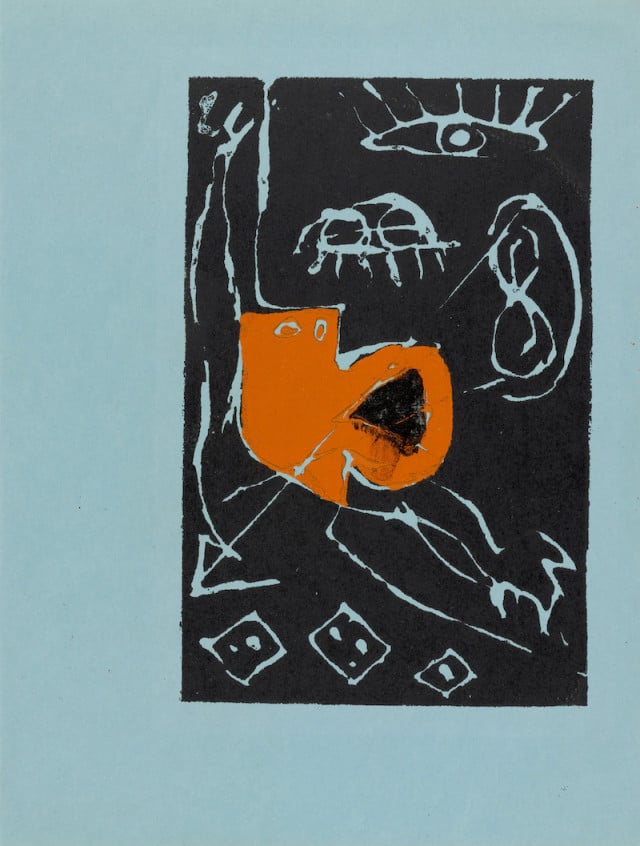Art & Exhibitions
Jackson Pollock’s Silkscreens Were Political Art
THE DAILY PIC: In his MoMA show, some rare prints by Pollock lean left.

THE DAILY PIC: In his MoMA show, some rare prints by Pollock lean left.

Blake Gopnik


THE DAILY PIC (#1491): Jackson Pollock made this silkscreen print in about 1944, as part of a series that’s in MoMA’s current survey of its Pollock holdings – the subject of this whole week of Daily Pics. We’ve come to take silkscreening for granted as just another printmaking medium, but when Pollock tried it out it was still a pretty new technology, newly imported into fine art. And it came with some very particular baggage: “Serious” printmakers were suspicious of it, even banning it from their shows for being too glib and mechanical. Maybe because of that it was seen as notably democratic and anti-elitist, with strong ties to activist artists such as Ben Shahn.
We know that Pollock’s first major influences were the lefty muralists of the Great Depression, but even once he started pushing toward abstraction, as in his MoMA silkscreens, he may have wanted to keep an undergirding of social consciousness. Compared to the previous iteration of American abstraction, with its love of Mondrian’s otherworldly geometries, it’s not ridiculous to think of Pollock’s more human-centered version as having a populist, left-leaning bent. After all it was launched – and launch-able – in Life magazine. (Acquired through the generosity of Agnes Gund and Daniel Shapiro, in honor of Lily Auchincloss, 1996 © 2015 Pollock-Krasner Foundation / Artists Rights Society (ARS), New York)
For a full survey of past Daily Pics visit blakegopnik.com/archive.